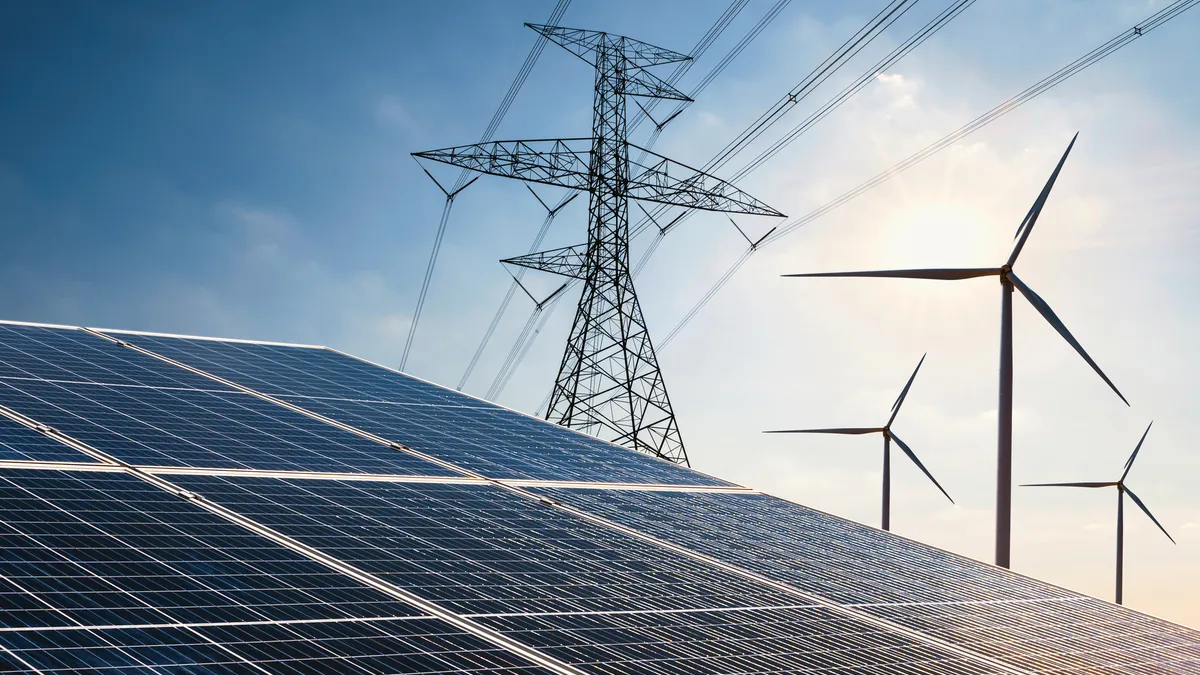Dive Brief:
-
Developers installed 3,188 MW of utility-scale clean power in the second quarter, 55% less than the same period last year, according to a new report from the American Clean Power Association.
-
Solar installations dropped 53%, while wind installations declined 78%, according to the report. However, installations of energy storage grew 13%.
-
ACP attributes the decline to economic uncertainty and policy inaction. “Congressional inaction and uncertainty on long-term tax policy, tariff and trade restrictions, and transmission constraints all impact the demand for clean energy at a time when we need to be rapidly scaling up development,” ACP CEO Heather Zichal said in a statement.
Dive Insight:
New numbers from ACP provide further insight into the impact of recent policy and economic headwinds, including the Department of Commerce’s solar tariff investigation in China, on the renewable energy industry.
Developers completed 41 solar projects, 14 storage projects and five wind projects during the second quarter, bringing the total installations for the year to 9,795 MW, according to ACP. Installations during the first half of 2021 totaled 13,000 MW.
While solar has suffered primarily because of tariff uncertainty and supply chain challenges, wind development is down substantially as a result of the planned phase-out of the production tax credit, according to Tara Narayanan, Americas power, gas & carbon analyst at BloombergNEF, which has tracked similar trends as ACP. An extension of the tax credit was expected as part of the Build Back Better bill, but it now seems unlikely the bill will pass Congress.
Although the industry has a record amount of clean energy in development, the report says, the rate of growth has begun to slow. Developers started construction on 3,964 MW during the second quarter, while there is a total of 128,889 MW under construction and in advanced development, according to ACP. The trade group estimates that more than 32.4 GW of clean power projects have been delayed since the end of 2021, including 21 GW of solar projects.
The second quarter also saw the number of projects beginning construction or entering later stages of development decline with just 7,000 MW entering advanced development, according to ACP.
“The prospects for these projects moving from development to constructed development are unclear without action from Congress,” according to ACP.
Zichal said that members of ACP stand ready to build “America’s clean energy economy,” but that “the current business and policy environment is slowing the rate of deployment.” In addition to uncertainty around long-term trade policy and tariffs on solar panels, ACP also sited commodity prices, supply chain issues and delays triggered by Covid-19, and increased operating costs as challenges slowing the industry.
Narayanan said BloombergNEF has estimated the contraction of renewables development could resolve itself within two years. But more recently, Narayanan said, “the number of unexpected events keeps increasing, (including global events with knock on effects, like the war in Ukraine), [and] it is much harder to say anything with confidence.”
However, corporate demand for renewable energy remains strong, according to the report, with companies signing power purchase agreements for more than 8,000 MW in the second quarter. Corporate procurement is up 27% since mid-2021, led by purchases from Amazon, Microsoft and Verizon.
Texas is currently the top state for renewable energy development activity, accounting for 18% of the total project pipeline, followed by California, New York, Indiana and Virginia, according to ACP.













